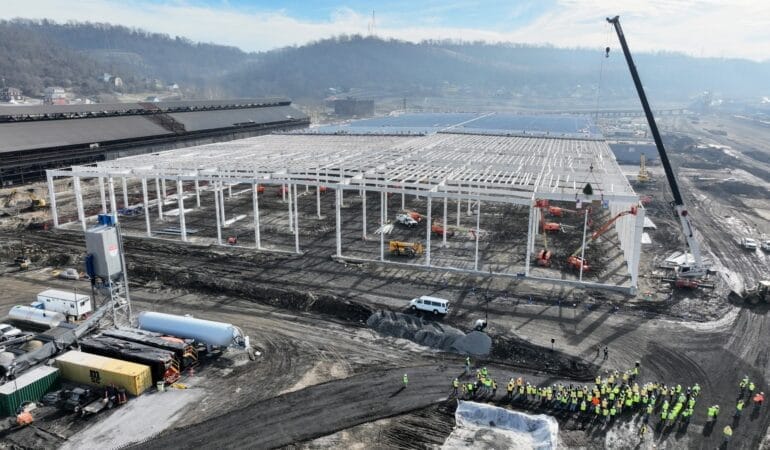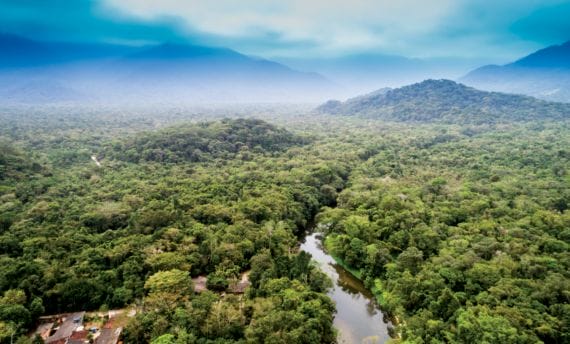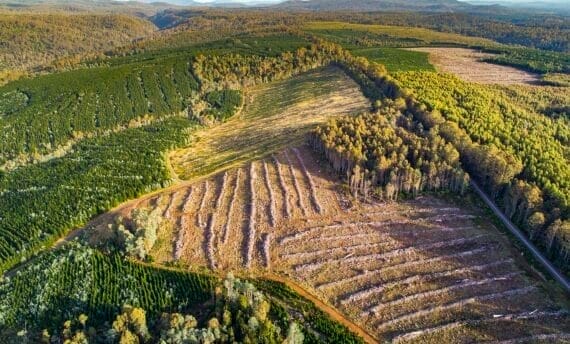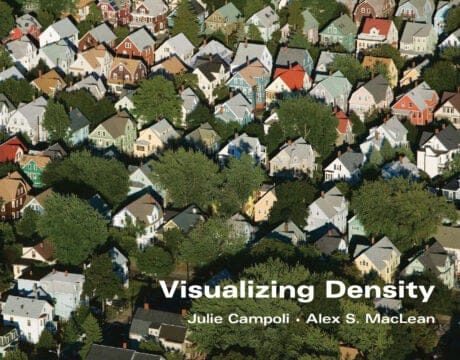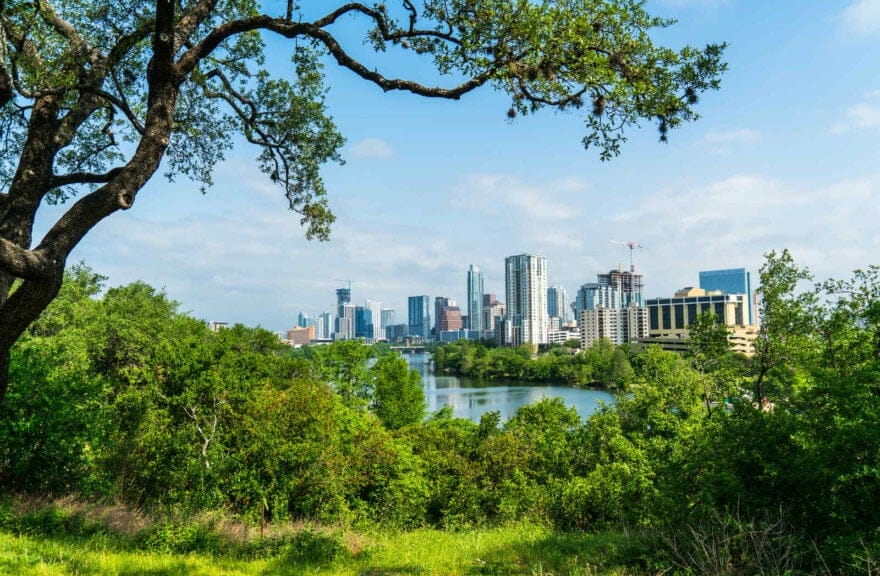In the Carondelet neighborhood of St. Louis, where once-busy shipyards gave way to vacancy and blight during the waning decades of the 20th century, a global specialty minerals company is building a $400 million factory to produce highly efficient batteries for energy storage.
Another new factory is rising up amid the shuttered steel mills and closed coal mines of Weirton, West Virginia, built by a different manufacturer whose battery technology involves mixing iron particles and air.
And in Schenectady, New York—where the production of electric lights, appliances, and engines by Thomas Edison’s General Electric company spurred an economic boom that began in the late 1800s and had faded away by the mid-1900s—the first of a class of super-tall, highly efficient onshore wind turbines recently rolled out from a pristine assembly line at a new GE plant.
“It’s a win-win for the environment and the local workforce,” beamed New York State Assemblyman Angelo Santabarbara in a TikTok video recorded outside the plant, which will ultimately employ 200 people including skilled union labor. The end result, he said, will be “a more affordable, reliable, sustainable, and secure energy future.”

All of these projects and dozens more across the country are manifestations of a new federal, place-based industrial policy, fueled by more than $1 trillion in tax credits and grants under the Infrastructure Investment and Jobs Act, American Rescue Plan, CHIPS and Science Act, and most of all, what is essentially sweeping climate action legislation, the Inflation Reduction Act.
Facing the urgent need for manufacturing the components of the clean energy transition—electric vehicles, batteries and energy storage, equipment for charging stations, wind turbines, solar panels, and many other components of the transition from fossil fuels, like high-capacity carbon-fiber power lines to bolster the nation’s overburdened power grid—the Biden administration has made several strategic decisions.
First, the White House declared that the United States should not cede all this advanced industry to China, currently the world’s leader in producing wind and solar equipment and inexpensive electric vehicles. And if these items are to be made in America, administration officials say, it should happen in postindustrial legacy cities and distressed counties—the “places where opportunity has left,” as White House climate czar Ali Zaidi said at a Columbia University conference last fall.
Since President Biden took office, companies have announced more than $250 billion in private investments, an unprecedented amount, to manufacture “the nuts and bolts of clean energy,” said Ben Beachy, special assistant to the President for Climate Policy, Industrial Sector, and Community Investment. “The administration is committed to ensuring that hard-hit communities and workers reap the rewards of this boom, including deindustrialized communities.”
Leaders in legacy cities, which have been struggling with manufacturing and population loss for decades, say they welcome the boost. Many perceive something poetic about the heavily polluting manufacturing processes of a century ago being replaced with industry that both functions sustainably and produces equipment that will help reduce fossil fuel emissions. The pivot, as much cultural as having to do with economic development, is already leading some to rechristen the Midwest and Southeast the “Battery Belt.”
“Cities like ours were built on energy innovation, but it extracted a price,” said Paige Cognetti, mayor of Scranton, Pennsylvania, a city known since the turn of the 20th century for its sooty coal and electricity industries. Cognetti cites Biden’s childhood roots in the working-class city as a factor in the initiative to help legacy cities engage in the clean energy transition. “I think he understands that it takes major investment to set up regions for economic success and climate resilience.”
Many questions remain about implementation, however, including whether economically distressed regions can conjure the necessary ecosystem to support the new industry—first and foremost a trained workforce, but also other elements such as infrastructure, housing, and vibrant civic and higher education institutions to provide not only training but also research and development.
In addition, the massive amount of federal investment flowing from Washington will require a keen administrative capacity at the state and local level to discover the opportunities, manage transactions, and comply with rules and regulations.
Finally, land use issues are expected to complicate the effort. The amount of space needed by many of the private companies—for building electric vehicles, in particular—is such that the best sites are at the periphery of cities, requiring greenfield development, rather than in the urban core. Urban infill redevelopment is possible, but there are significantly higher costs associated with adaptive reuse or brownfield regeneration.
The challenges are very real, but so is the opportunity. While federal spending from the IRA could be disrupted if there is a change in administrations, repeal would require Congressional action. In the meantime, billions of dollars in federal funding have begun to flow from the first investments of that law. Local, regional, and state governments and their partners should be ready with thoughtful and actionable plans for implementation, said Peter Colohan, director of Federal Strategies at the Lincoln Institute of Land Policy.
“The money and incentives flowing out of the government at a rapid pace are making private investment irresistible—in clean energy, nature-based climate solutions, and advanced manufacturing,” he said. Issues of land use and equity will surface regularly, he added, requiring state and local governments, philanthropies, and nonprofit organizations to help “create virtuous circles of community investment, and avoid unintended harms.”
* * *
The history of subsidy in American manufacturing has some twists and turns, but ultimately government support in one form or another has supported industry for over two centuries. From the first flour mills in the late 18th century to the advent of the automotive assembly line, manufacturing in the United States fulfilled a market need for goods and supplies that was driven largely by individual entrepreneurship, though generally welcomed with open arms by local officials happy to make sure land transactions, for example, went smoothly to establish factories and nearby worker housing.
During that early era of industrial growth, government also stepped in to provide the infrastructure to support commerce, from a national rail network to ports and canals. Factories were generally located well within city limits, their access to waterways and rail lines making it relatively easy to get the goods to market, both domestic and overseas. The physical imprint of this growth on America’s cities was transformational, with blocks-long multi-story structures built to employ 10,000 workers or more, and an adjacent density of housing and amenities.

World War II turned the nation’s industrial might toward building tanks and planes for the military, and began a tradition of decentralized defense spending, with contractors establishing themselves in Congressional districts that made sure the pipeline of Pentagon funds kept flowing. The Interstate Highway Act of 1959 was another important source of federal investment for cities, powered by the argument that new freeway infrastructure was needed for the swift movement of goods.
As the economies of Japan and Europe came back online in the decades after the war, manufacturing in Rust Belt cities gradually petered out. From the 1950s through the 1970s, private companies increasingly took advantage of cheaper labor overseas, and technological automation in production and distribution thinned the payroll even more. Thus began the decline of once prosperous cities across a swath from the Mississippi River to the Northeast, from St. Louis to Cleveland, Allentown to Hartford.
The spate of factory closings through the 1970s was devastating, said Alan Mallach, coauthor of “Regenerating America’s Legacy Cities,” a report published by the Lincoln Institute. “Start with the proposition that in the 1950s and early 1960s, as many as half of all the jobs in cities like Cleveland or Youngstown were in manufacturing, and then factor in that most of the retail and service jobs were supported by the wages factory workers were making, you have to figure that 70 to 80 percent of the local economies in these cities was based on their manufacturing sector. So ‘doomed’ may be a bit strong, but it comes close.”
Add in the phenomenon of white flight, which saw white residents move en masse from downtown areas to suburbs, and what is remarkable is that legacy cities survived in any form at all, Mallach said. With both the physical urban environment and the social and economic fabric changing dramatically, he says, “a lot of credit goes to the thousands of working-class and middle-class Black families who moved into the neighborhoods being vacated by white families and stabilized them for the next few decades.”
Over the last half-century, certain types of manufacturing continued to be propped up on an ad hoc basis by the US government, in the form of selective tariffs—imposed on foreign competitors to benefit American-made steel, for example—or outright bailouts, as enjoyed by the automotive industry after the Great Recession. Tech companies including Amazon, meanwhile, have frequently been given red-carpet treatment involving significant tax breaks and other incentives as local leaders compete to have businesses set up shop in their city or town.
Notably, it is the energy sector that has benefited from the longest and most robust history of subsidy, beginning with federal rewards for depleting oil wells in the 1920s and continuing with tax breaks and subsidies to this day—conservatively estimated to be $20 billion a year for producers of coal, natural gas, and crude oil.
Now that fossil fuels are set to be replaced by renewables including wind, solar, and hydro, the White House is attempting to execute the equivalent of a three-cushion billiards shot: fight climate change by making the transition away from fossil fuels, make clean energy components and systems in America, and restore jobs in struggling places.
“We will not achieve our climate goals without mobilizing trillions of dollars in support of climate action. Properly guided, that wave of investments can flow into good union jobs,” said Beachy, from the climate policy office. “Properly guided, it can flow into communities that have endured decades of divestment. Our climate strategy is a job strategy, it is an equity strategy. That’s the basic logic.”
For an initiative that has been operating relatively under the radar, the place-based approach does appear to be off to a strong start. According to two federal government databases, at the Department of Energy and the White House’s Investing in America inventory, an estimated 700 clean energy projects are already online or in the works, across sectors including:
- Batteries and materials. High-performance batteries are much in demand for increasingly popular EVs, including the Ford F-150. Power storage is a huge need in the clean energy grid, to extend and preserve energy provided by renewables. Driven by innovation, battery factories and critical minerals facilities are popping up in Michigan (Our Next Energy), Georgia (Anovion Tech, SK Battery), North Carolina (Albermarle Corp.), and Mississippi, where a new truck battery joint venture will create more than 2,000 clean new jobs—more than any single investment has ever brought to the state.
- Electric vehicles. Given the head start by the heavily subsidized EV makers in China, as well as a competitive position by the pioneering company Tesla, expanded production in the United States has been halting. Administration officials say there is growing demand, aided by the $7,500 tax credit individuals can claim upon purchase; since the passage of the IRA in 2022, there were a record 1.46 million passenger clean vehicle sales, according to the Treasury Department. In addition to new EV plants, such as Rivian’s in Illinois, billions are available for retooling existing automaking facilities and encouraging the manufacture and deployment of the all-important network of charging stations, which are poised become as ubiquitous as gas stations.
- Wind. Here again, China is the leading producer of wind turbines, with 60 percent of the world’s production capacity. But American companies, like GE Vernova in Schenectady, are making strides in developing more efficient and effective towers, blades, and associated infrastructure to better connect to the grid. Technological innovations are opening up new possibilities as well, such as less expensive bladeless turbines that capture prevailing winds or turn to harvest wind from different directions.
- Solar. The world’s fastest-growing source of energy is another difficult challenge, as the cheapest solar panels continue to be made in China—and indeed, the seven major Chinese solar companies recently provided more power to the world than oil companies, according to Bloomberg. But a few standouts have been successful, especially poetic in places that used to produce coal or heavy manufacturing. In Farmington, New Mexico, a solar farm is being built near a decommissioned coal-fired power plant and mine. As with wind technology, solar is evolving rapidly; one company has developed sun-harvesting crystal spheres that would take up a fraction of the space now required for panels.
- Other ancillary support. Several programs under the IRA are providing general support for new industry by improving roads, bridges, airports, and drinking water systems, with notable upgrades in the works in Milwaukee, Buffalo, and Allentown. The White House is also intent on bolstering the supply chain of materials like aluminum, which is critical in solar panels, EVs, and power lines—and making sure that the production of those materials is less polluting. As an example, Century Aluminum is receiving funding from the Department of Energy for a $3.9 billion project to build a new, clean primary aluminum smelter in the Mississippi River Basin.

It is difficult to overstate the unprecedented volume of federal support for these efforts. Keeping track of what funding is available and where it’s going has become a cottage industry. In part because the main instrument is the tax credit, the ultimate cost to the federal budget depends on the number of private companies that collaborate with local regions on projects (as well as individual households that take advantage of rebates for EVs, energy efficiency, and climate-friendly systems such as hot and cold weather heat pumps).
The baseline figure provided by the Biden administration was that the IRA, a multi-year program, would provide at least $370 billion for the clean energy transition, in spending and tax credits. Brookings estimates that $780 billion could be coursing through the US economy by 2031, while Goldman Sachs calculates the total potential amount at $1.2 trillion.
“It is an extraordinary policy moment,” said Mark Muro, senior fellow at the Brookings Institution, who coauthored a report listing some 70 distressed counties that have received some kind of investment already. “This is a new, modern, distinctly American industrial strategy, rebalancing the economy. This will bring hope and genuine economic activity to places that have been without that for years.”
Supporters point to dozens of ribbon-cuttings for plant openings that have already occurred—part of what they compare to manufacturers coming forward for the war effort 80-plus years ago, as a kind of patriotic national mobilization symbolized by Rosie the Riveter flexing her bicep and proclaiming, “We can do it.”
Where the Funding Is Coming From
On paper, the Biden administration has made available more than $3.6 trillion in federal funding for infrastructure, manufacturing, and community resilience since 2021, including hundreds of billions to support the transition away from fossil fuels. At present, only a fraction of the multi-year spending plans has actually been distributed.
Inflation Reduction Act (IRA): The chief feature of this nearly $500 billion law signed by President Biden in 2022, in addition to inflation-curbing measures such as reducing the federal budget deficit and lowering prescription drug prices, is the unprecedented investment in clean energy to combat climate change. A multi-year spending plan based largely on tax credits, the IRA could have a total cost of $1 trillion, according to some estimates.
CHIPS and Science Act (CHIPS): Also signed into law in 2022, the Creating Helpful Incentives to Produce Semiconductors (CHIPS) and Science Act is intended to bring microchip manufacturing back to the United States after decades of semiconductors being made overseas, primarily in China. About $60 billion is being directed to strengthen American manufacturing, supply chains, and national security, and invest in research and development for high-tech industry including nanotechnology, clean energy, quantum computing, and artificial intelligence.
Infrastructure Investment and Jobs Act (IIJA, also known as the Bipartisan Infrastructure Law): This law authorizes $1.2 trillion in spending that includes about $550 billion in funding for America’s roads and bridges, water infrastructure, resilience, Internet, and more. The White House describes the legislation, signed into law in 2021, as a boost to U.S. competitiveness that will create jobs and “make our economy more sustainable, resilient, and just.”
American Rescue Plan Act (ARPA): The $1.9 trillion stimulus package, passed by Congress and signed by President Biden, included $30.5 billion in federal funding to support the nation’s public transportation systems and other capital investments. The legislation was largely a response to the economic disruption caused by the Covid pandemic.
***
Although the federal largesse is welcome, some wonder if a single factory can really make a dent in the problems of deep-seated poverty, underperforming schools, vacant properties, and persistent crime that have metastasized over decades in legacy cities.
“Reindustrialization around clean energy and technology is a good thing as far as it goes, but I don’t think it goes anywhere as far as its boosters seem to believe,” said Mallach.
There is much baggage to overcome. Revival in places like Cleveland or St. Louis has been uneven. Some smaller legacy cities have struggled in part due to a lack of robust civic institutions and “eds and meds,” the nonprofit anchor institutions providing employment and innovation.
The traditional manufacturing city was sustained by a kind of factory that hardly exists any more— facilities with large footprints and employing 10,000 people or more. That configuration is not easily replaced, Mallach said. New manufacturing is much less labor intensive.
As an example, he cited a new steel mill in Youngstown, Vallourec Star, which replaced a prior facility. “It probably produces more than the old mill did, but it does it with 700 to 800 workers, not 10,000 to 15,000. And most of those workers sit at consoles operating machinery and robots, which, of course, means that they need a respectable level of computer literacy.
“Now, 700 jobs matter, but it’s a drop in the bucket compared to what’s been lost,” Mallach said.
Others have concerns at a higher policy level, expressing doubt about the government’s ability to pick winners and losers in private markets, and recalling the failure of the solar company Solyndra during the Obama administration. Some start-ups don’t pan out. Coal miners may not transition to being electricians at a wind turbine factory. Already the EV maker Rivian had to pause construction of a 13 million-square-foot plant in Georgia because of financial losses as the company tries to ramp up production.
“My thinking is that there should be a pretty high bar to clear to justify” government support for private industry, said Colin Grabow, associate director at the Cato Institute. “If there’s some need that’s not being met by the market, government might intervene,” he said, or if there are national security issues at stake, as is the case with microprocessors.
But Grabow questions the emerging industrial policy in practical terms as well, suggesting that the world should have access to the cheapest clean energy possible, whether made in America or not.
“If the overriding goal says, ‘hey, we’re facing a planetary emergency, and we need to do this transition’ . . . if the Chinese want to give us cheap EVs and solar cells and all the rest, then that should be welcomed. The economy and jobs should take a back seat to that,” he said.
Still, supporters argue that if there was ever a time to boost the clean energy transition, it is now, with essentially the future of the planet at stake. Many bemoan a perceived pattern that the clean-energy sector is being unreasonably scrutinized and questioned, in light of the history of the government so willingly supporting other industries.
Steering the factories to postindustrial regions is seen as an appropriate measure to address economic inequities, especially those places that were ultimately harmed by the environmental and health impacts of coal mining or heavily polluting industries.
“Dealing with climate change offers a real chance to take on the inequality that plagues our country as well,” said Bill McKibben, a professor at Middlebury College and founder of the climate action organizations 350.org and Third Act. The Biden administration “has been putting factories in places based on real need.”
So far, the federal funding to support made-in-America clean energy manufacturing is going to blue and red states alike—and indeed one analysis by Politico showed that most of the projects are in red states.
“We want to be able to see energy—clean energy—produced in every pocket of the country. Blue states, red states, really it helps to save people money, so it’s all about green,” Energy Secretary Jennifer Granholm told reporters at a White Housing briefing last year when discussing how Republican districts were using the clean-energy investments.

At least three major challenges remain if the implementation of the place-based industrial policy is to be successful, however. The first is the capacity of state and local governments to take advantage of all the funding and programs that have been very quickly made available.
States and municipalities are scrambling to apply for dozens of new programs to leverage the tax credits and rebates, which requires extensive knowledge of grant-writing and compliance rules. The administration has tried to make the process as user friendly as possible, and established “direct pay,” which extends eligibility for funds to nonprofits and municipalities for the first time. “You qualify, you get a check,” senior White House adviser John Podesta told state and local officials at the US Conference of Mayors winter meeting in January in Washington, DC. “We hope you will be evangelists” in spreading the word, he added.
Despite the effort, six out of ten mayors said in a survey by the Boston University Initiative on Cities that bureaucratic complexities were weighing down the process, citing a “challenging grant application process and the public’s lack of familiarity with its details.”
Some states like Illinois and Nevada have set up offices to make sure federal funding is efficiently and effectively used. Massachusetts recently also did something similar, to help distressed communities become aware of the federal funding opportunities that can help nurture the interest of private investment. Randall Woodfin, the mayor of Birmingham, Alabama, established a “command center” to keep track of applications and deadlines.
Another, more complicated hurdle is the need to support the new factories with an ecosystem of workforce training, child care, and the all-important engagement of nonprofit, civic, and higher education institutions. And that, in turn, will guide the land use decisions that will unlock economic activity in an equitable manner, said Bruce J. Katz, director of the Nowak Metro Finance Lab at Drexel University.
“This is a remarkable transition. It’s phenomenal. But location matters,” said Katz, who is also cofounder of New Localism Advisors, which seeks to help cities design, finance, and deliver transformative initiatives that promote inclusive and sustainable growth. “The devil is in the details as to where the large plants are located, and all these pieces of the puzzle that need to come together, whether it’s supply chain, spillover effects, or workforce readiness.”
The country “tends to have an invest-first, plan-later perspective on the world,” he said, leading to a highly decentralized system. “We turn on the faucet and corporate investment is right there ready. Well, the cities need to have the sites ready.”
In addition to determining suitable locations, adds Amy Cotter, director of Climate Strategies at the Lincoln institute, “cities are going to need to be really intentional about planning for new industry in concert with resilience and inclusion.” Thoughtful urban planning, she notes, “can give rise to clean industry in a supportive ecosystem that enhances equitable prosperity for longstanding and new residents alike.”
Several state and local governments are setting a foundation for this boom. In Pennsylvania, Governor Josh Shapiro established a $500 million initiative to make sure commercial and industrial sites are ready for development. West Virginia Northern Community College promised to set up courses and internships to prepare students for jobs at Boston Metal, a maker of clean-power alloys.
Technological advances will help. Artificial intelligence can turbo-charge a range of higher education institutions, large or small, to provide research and development support to burgeoning clean energy industries. “There’s no question universities and research ecosystems can support and inform clean energy manufacturing, and AI can be a huge factor in discovery and innovation and scaling,” said John Werner, chief innovation officer at MIT Connection Science, a cross-disciplinary program facilitating networks of entrepreneurs.
Muro, from Brookings, said workforce development and training is key to securing employees who may not have a college degree, who seek fulfilling and rewarding livelihoods that are a step up from the burdensome grind of the fossil fuel era. “It’s not your grandfather’s factory work,” he says.
Nothing about it will be particularly easy. Trying to grow a supportive ecosystem “is not for the faint-hearted,” Muro said. “Resources, transportation, wrap-around services, support for midnight shifts, childcare . . . There’s a lot to wrestle with in this transition.
Still, he says, the moment is unprecedented, and it holds real promise: “Some legacy cities will do a great job and some will struggle, but at least they will be in the mix and will have this opportunity.”
Anthony Flint is a senior fellow at the Lincoln Institute of Land Policy, host of the Land Matters podcast, and a contributing editor of Land Lines.

